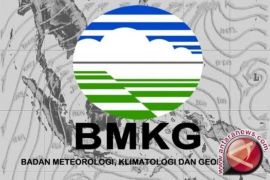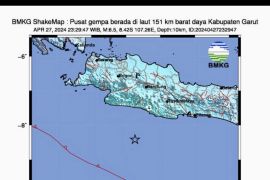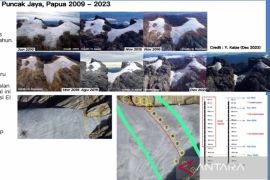"Do not destroy the environment such as carelessly cutting down trees and reducing land slopes because La Nina triggers heavy rainfall and flooding," she said at a press conference on La Nina and the rising risk of hydrometeorological disasters in Indonesia here on Monday.
Hydrometeorological disasters are not only caused by La Nina or heavy rainfall, but are also greatly influenced by the environmental capacity, she added.
In addition to disseminating weather information and forecasts, BMKG has also been pushing intensive coordination between ministries and institutions and running simulations of the impact of weather conditions in some regions, she informed.
Numerical modeling prediction analysis has been intensified because the risk is quite high like last year when La Nina raised monthly rainfall by up to 70 percent, Karnawati said.
Related news: BMKG warns of potential hydrometeorological disasters
Coordination with local governments is also being carried out to prepare the environment, review water tank capacity, and control lake siltation levels, she added.
Lake siltation needs to be considered as lake capacity is key to keep surface water flowing, she explained.
"Those who live along the riverbank area need to monitor weather information and observe the environment, whether it is a zone prone to flooding or landslides. Let's take steps to protect the environment," she expounded.
According to the BMKG, currently, 20 percent of the Indonesian season zone area has entered the rainy season. The agency forecast that weak La Nina conditions may likely prevail until February 2022.
The La Nina phenomenon is influenced by anomalies of sea surface temperature in the central Pacific Ocean, with Indonesian territorial waters warming up the Indonesian sea surface, it explained.
The anomaly has exceeded the limit of La Nina occurrence, which is 0.5, Karnawati said. In October 2021, it was recorded that in the first ten days, the limit was minus 0.61, she added.
La Nina increases the flow of wet air masses, thereby increasing rainfall, according to Karnawati.
Related news: BNPB records 1,560 natural disasters during Jan 1-July 15 period
Related news: As La Nina brings disaster, misery, demand for climate action grows
Translator: Desi P, Kenzu T
Editor: Suharto
Copyright © ANTARA 2021












